Atlas Cables
| Atlas Cables |
|
A Neat Little Discovery |
|
Sept 2005 |
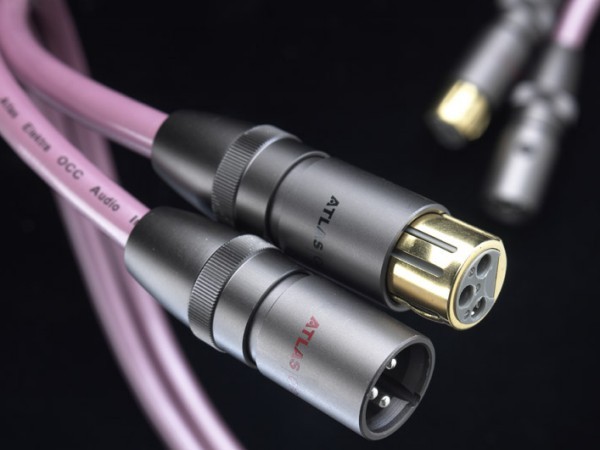
Sometimes being noticed by your photograph has some advantages. H. Courtenay Osborne and I had just gotten into an elevator in the San Remo Hotel after a long day during this year’s CES when a couple of gentlemen struck up a conversation with us. Noticing our “Press” badges they told us that if we hadn’t encountered any cables that we liked, that we should be sure to stop by the May Audio room and check out cables from a company called Atlas Cables. The next day, like good reporters following a lead, we made it over to the May Audio room where we met the affable and gracious, John Carrick. We found him to be very knowledgeable about cables and their design, and about audio in general. He took us over to the Atlas Cable display and gave us the rundown on the cable’s manufacturing process, construction and performance characteristics.
Now I have to confess to being curious about all of the information that John was sharing with us because quite frankly, I had never heard any cables from the U.K. that I’ve been really impressed with. Back in the late ‘80s to early ‘90s, I really liked listening to the whole Linn-Naim, “musical products from England,” thing but as for their cables, there was just nothing there to hang your hat on. When I would point this out to various Linn-Naim dealers or equipment owners I knew, it always came down to them saying, “well cables are just not that important in the audio system hierarchy.” This was a response that didn’t sit well with me. Back then, it seemed as if cables were just another means for a company to make money and that all cables were doing basically the same thing. The only difference being that some cables got in the way more than others. The cables from the U.K. were less of an intrusion and therefore, didn’t need to be large, gaudy monstrosities drawing attention to themselves. Well that’s what I was told anyway.
My early listening to those U.K. cables and others from companies such as DNM, were fairly unremarkable. You try to use them in your system where you had anything but equipment from the U.K. and they sounded awful. There were no detailed highs or lows, no clearly defined soundstage, and no real musical enjoyment. I know I haven’t listened to any of their equipment for a while now, but I wondered just how much better Naim’s electronics would have sounded with some better audio cables? I better stop. I can feel the eyes of some NAP-250 owner glaring right through me already. After spending a good 30 minutes talking to John, we made arrangements to do a review of the Atlas Cables so that we could see just how far cables from the U.K. had advanced in the last 15 years or so. I am pleased to report that with the Atlas Cables we can dispense with a lot of these stereotypes.
Stepping into the modern era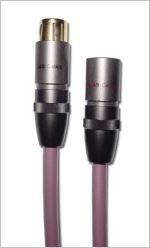 Oddly enough, the first thing that caught my eye about the Atlas Cables, was not only did they have some size to them (similar to my old Vampire Wire), but they also had color as well. This was a radical departure from what I had previously experienced from the U.K. The Atlas Elektra interconnect came in a color they call “pearl red” (which I swear to you looks like lavender), while their Ichor speaker cables are a pearl green color (which actually does look green). The cables are well made, not at all stiff, and are easy to maneuver around the back of your equipment racks. The direct silver and gold plated OCC copper XLR connectors used on the interconnect cables have a nice, solid feel to them.
Oddly enough, the first thing that caught my eye about the Atlas Cables, was not only did they have some size to them (similar to my old Vampire Wire), but they also had color as well. This was a radical departure from what I had previously experienced from the U.K. The Atlas Elektra interconnect came in a color they call “pearl red” (which I swear to you looks like lavender), while their Ichor speaker cables are a pearl green color (which actually does look green). The cables are well made, not at all stiff, and are easy to maneuver around the back of your equipment racks. The direct silver and gold plated OCC copper XLR connectors used on the interconnect cables have a nice, solid feel to them.
The speaker cables have a particularly novel configuration. They’re made with a sleeve at the speaker end that has a splitter box – or “cable stopper” as they call it – inside of it. The cable goes through the sleeve and into one end of the stopper and exits the other end as separate positive and negative cables neatly dressed with a nice mesh material. Finally, the wires are terminated with a good strong connector that they call a “Z-plug”, which for all intents and purposes is just like a banana plug.
Now I do have to mention a small caveat here. The connector itself is really good. It gave me a nice, tight yet smooth connection that did nothing but inspire confidence. However, the housing that comes with the connector is not very sturdy and can easily get loose and fall off. To Atlas’ credit, they do say you can either leave this sheath on or remove it once you have everything in place. You probably will be better off removing them but keep them close just in case.
With that out of the way, everything else about the cables’ functionality I liked a lot. The Atlas Hubble power cords, which are about the same thickness as the interconnect cables and speaker cables, have a black sheath with a nice connector but nothing else about them stands out. For the technically curious, per the Atlas Cables website, the Atlas Ichor speaker cable uses OCC copper conductors with ultra low loss teflon dielectrics. The conductors are laid in a twisted fashion to avoid the adverse effects of EMI and provide improved resistance to the proximity effect. Cotton yarn filler is used to reduce microphony and use aluminum foil and drain wire to avoid RFI. The Elektra interconnects are fully balanced and use multi-stranded 99.9997% pure OCC copper screen with an aluminum foil for 100% coverage and the rejection of RFI and an FEP Teflon primary dielectric. Cotton yarn filler is used here, as with the speaker cable, to reduce microphony. The Ichor has two concentric stranded rope-lay 99.9997% pure OCC copper multi-stranded conductors, twisted for the avoidance of EMI and for reduced resistance from the proximity effect.
Getting down to the sound of the matter
As per John Carrick’s instructions, I gave the cables a good two weeks of breaking in before I did any serious listening to them. I can say without any hesitance that I believe it was more like three weeks before I started getting the best of these cables. After three weeks, the high end opened up dramatically and the bass, which initially seemed diffuse from the rest of the frequency spectrum, rounded into form quite nicely. I used the cables initially between my Thor TA-1000 linestage and a pair of BAT VK1000s but switched over to my Sonic Euphoria passive linestage in order run my system with the balanced cables throughout. My initial impressions of the cables were that they were very neutral. Every time I changed a piece of equipment or another cable in the chain, I could hear it as easily as I could with my reference Sunny Cable (which I reviewed back in April), but that was about it. I thought to myself, “seems like nothing has changed”, when it came to cables out of the U.K. I had a hard time judging the merits of this cable initially because there just didn’t seem to be a lot going on while in this system that got me excited as when I had the Sunny Cable and even the Dynamic Design cables installed. After listening to this system configuration for several weeks, I changed amps and went with the Soaring Audio SLC-A300. Whoa. Hold on a second. The combination of the Sonic Euphoria preamp and the Soaring Audio amp with the Atlas Cables in between really took off. I had used this amp and preamp combination before with Virtual Dynamics Nite and Cardas Golden Cross to good effect, but it was not this lively or musical.
Now I was beginning to have some fun.
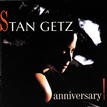 One of my favorite saxophone performances is Stan Getz from his Anniversary album [EMARCY 838769-2]. This excellent album was recorded live at the Montmartre Club in Copenhagen and features Kenny Barron on piano, Rufus Reid on bass and Victor Lewis on drums. On the track, “Stella by Starlight”, I could actually feel the presence of being in an audience. The primary and secondary room sounds came through. Rufus Reid’s mesmerizing bass solo on, “Stan’s Blues” was made all the more lifelike by the sound of the decay of notes before they disappeared into the upper regions of the club.
One of my favorite saxophone performances is Stan Getz from his Anniversary album [EMARCY 838769-2]. This excellent album was recorded live at the Montmartre Club in Copenhagen and features Kenny Barron on piano, Rufus Reid on bass and Victor Lewis on drums. On the track, “Stella by Starlight”, I could actually feel the presence of being in an audience. The primary and secondary room sounds came through. Rufus Reid’s mesmerizing bass solo on, “Stan’s Blues” was made all the more lifelike by the sound of the decay of notes before they disappeared into the upper regions of the club.
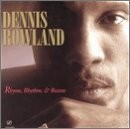 Next, I gave Dennis Rowland’s, “Don’t Misunderstand”, from his Rhyme, Rhythm & Reason CD [Concord Jazz CCD 4650]. Mr. Rowland is one of my favorite male vocalists and I really like the emotion he sings with. I got a real good sense of the feeling he was trying to convey through this song with the Atlas cable in place than with a lot of the other cables I had heard.
Next, I gave Dennis Rowland’s, “Don’t Misunderstand”, from his Rhyme, Rhythm & Reason CD [Concord Jazz CCD 4650]. Mr. Rowland is one of my favorite male vocalists and I really like the emotion he sings with. I got a real good sense of the feeling he was trying to convey through this song with the Atlas cable in place than with a lot of the other cables I had heard.
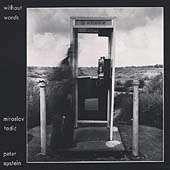 On the Peter Epstein and Miroslav Tadic’s offering Without Words [MA Recordings MO22A] we get an unusual, but captivating, duo of saxophone and classical guitar. Both of these gentlemen are virtuoso performers with their instruments and make this combination work splendidly. Mr. Epstein’s sax conveys many tonal colors clearly and distinctly. On, “Pajduska”, the Atlas cables allowed me to hear the tonal colors of his soprano sax even as Epstein changes the melody and tempo of the tune throughout this track. Atlas Cable does wonderfully with the female voice as well. On Rachelle Farrell’s album First Instrument [Blue Note], tracks such as the heartfelt, “You Don’t Know What Love Is”, and the contemplative, “Prayer Dance”, allow you to experience the full range and power of her voice.
On the Peter Epstein and Miroslav Tadic’s offering Without Words [MA Recordings MO22A] we get an unusual, but captivating, duo of saxophone and classical guitar. Both of these gentlemen are virtuoso performers with their instruments and make this combination work splendidly. Mr. Epstein’s sax conveys many tonal colors clearly and distinctly. On, “Pajduska”, the Atlas cables allowed me to hear the tonal colors of his soprano sax even as Epstein changes the melody and tempo of the tune throughout this track. Atlas Cable does wonderfully with the female voice as well. On Rachelle Farrell’s album First Instrument [Blue Note], tracks such as the heartfelt, “You Don’t Know What Love Is”, and the contemplative, “Prayer Dance”, allow you to experience the full range and power of her voice.
Some interesting conclusions
The time spent with the Atlas Cable cables was both interesting and rewarding. I consider my setups and my equipment matching to be fairly consistent and always musical. Initially, I was very perplexed by this cable when placed between my Thor preamplifier and the BAT VK1000s. This is a very musical combination and easy to evaluate equipment with. Somehow, the Atlas cables did not perform as well in this setup as the Dynamic Design, the Sunny Cable, and to a lesser degree, the Blue Marble Audio cables. However, when I switched over to the Soaring Audio SLC-A300 amplifier, there was instant magic. The Atlas cables were neutral and really thrived when used in a livelier, more open set up. For all I know, it could have just been that it doesn’t work well with the BATs. When I used the Thor in front of the Soaring Audio, the magic was still there and then some. Music got more dynamic, the stage got wider and the bass was even deeper. Moving on from there and installing the Stello M200 monoblock amplifiers (review to come), the highs got sweeter and maintained the dynamic performance I had previously but with a touch more lifelike stage and air. Using the Atlas cables between the new and improved Almarro Audio A50125A vacuum tube integrated amplifier and their wonderful MA2 speakers was an even greater revelation. Not quite as punchy and dynamic as with the Soaring amplifier, but every bit as musical and with slightly more dimensional soundstage and presence. Whether it was solid-state or tube equipment, the Atlas cables showed their mettle through and through. I must admit that I can no longer stereotype cables from the U.K. anymore. Atlas Cable has had a mind changing effect on me. I can very easily recommend these cables.
Michael Wright
__________
Atlas Cable
Atlas Elektra XLR Interconnect 1meter pair $1,030.00 / $120 per additional meter
Atlas Elektra XLR 3metre pair $1,270.00
Atlas Ichor 2 meter pair with Z plugs $700.00 / $240 per additional stereo meter
Atlas Eos power cord with Hubble plug 1 meter $315 / 2 meter $370
Address
May Audio Marketing Inc.,
2150, Liberty Drive
Unit 7
Niagara Falls, NY 14304
Tel 716 283 4434
Fax 716 283 6264
E Mail mayaudio@aol.com
![]()
Don’t forget to bookmark us! (CTRL-SHFT-D)
Stereo Times Masthead
Publisher/Founder
Clement Perry
Editor
Dave Thomas
Senior Editors
Frank Alles, Mike Girardi, Key Kim, Russell Lichter, Terry London, Moreno Mitchell, Paul Szabady, Bill Wells, Mike Wright, Stephen Yan, and Rob Dockery
Current Contributors
David Abramson, Tim Barrall, Dave Allison, Ron Cook, Lewis Dardick, Dan Secula, Don Shaulis, Greg Simmons, Eric Teh, Greg Voth, Richard Willie, Ed Van Winkle, and Rob Dockery
Music Reviewers:
Carlos Sanchez, John Jonczyk, John Sprung and Russell Lichter
Site Management Clement Perry
Ad Designer: Martin Perry





Be the first to comment on: Atlas Cables